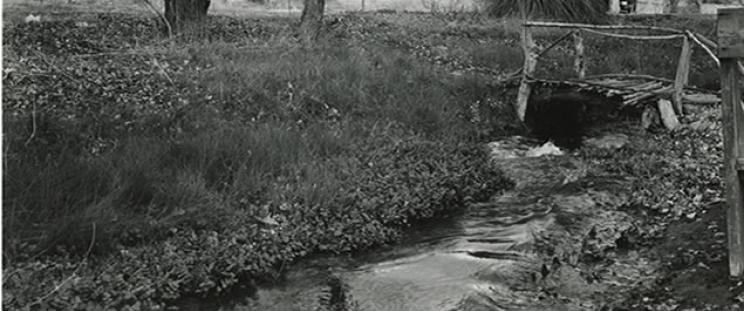Collection Paragraphs

The Las Vegas Springs supported intermittent Native American inhabitation for millennia. The Paiutes often made seasonal encampments at the springs that usually lasted through the winter. The springs were a welcome stop on the Old Spanish Trail, as Spanish then American travelers traveled along the well-worn road.
The Mormons were the first whites to establish settlements in the region. In early 1855, Brigham Young decided to establish missions in present day Utah, Idaho, and Nevada to proselytize the Native Americans, teach them agriculture, and to open a safe road from Salt Lake to the Pacific. 30 missionaries were sent to Las Vegas, led by William Bringhurst. The missionaries experienced initial success, baptizing many, planting crops, and beginning construction on a fort. By 1857, internal tensions and conflict with the local Paiute had already threatened the mission when Brigham Young recalled the missionaries.
Mormon settlers later returned to the Muddy River Valley and settled St. Thomas, Overton, and Logandale, farming and ranching, and using the river to irrigate their fields.
When Hoover Dam began impounding water in February of 1935 forming Lake Mead, some of the earliest settlements disappeared under its waters, including Fort Callville, the head of navigation on the Colorado River; Bonelli’s Ferry at which a ferry operated until the 1920s; and St. Thomas, an agricultural settlement established by Mormon missionaries to grow cotton, which was important enough to warrant a railroad connection to the Salt Lake line in 1910. Also lost under Lake Mead was the Pueblo Grande of Nevada—known as the Lost City—an Anasazi site excavated in 1924, and reconstructed only to be washed away.
Inquiry:
What could justify growing cotton in Southern Nevada and transporting it via rail lines?
Ranching in Southern Nevada, like ranching in the other arid western states, was a hard outdoor life, eking out what would grow in the highly alkaline soil using what water was available and raising what livestock could survive on the scrub that grew near the water on the range.

The ranches in the Las Vegas Valley quite naturally grew around the natural springs: the Cottonwood Spring, the Las Vegas Spring, and the small springs that watered what became known as the Kyle Ranch. The land watered by the springs supported fruit orchards, grapes, and a variety of vegetables. Oats, barley, and wheat crops would alternate with beans, melons, squash, cabbage, beets, onions, and potatoes. The grass (in the field, or cut for hay) fed livestock, beef and dairy cattle, horses, and hogs and chickens. Livestock roamed freely on the grasslands, some corralled at night by ranch hands (often local native Americans). Manufactured goods and supplies had to be freighted in from California or Utah.
Inquiry:
Using only images from the collection, how would you characterize desert ranching using the Stewart Ranch as a case study?
The largest and most significant ranch was the Las Vegas Ranch, headquartered on the grounds of the old Mormon mission settlement on the Las Vegas Creek, with grasslands extending west along the creek to where the Las Vegas—or Big Springs—bubbled up from the ground. The ranch later became known as the Stewart ranch after its later owners Archibald Stewart and his wife Helen.
